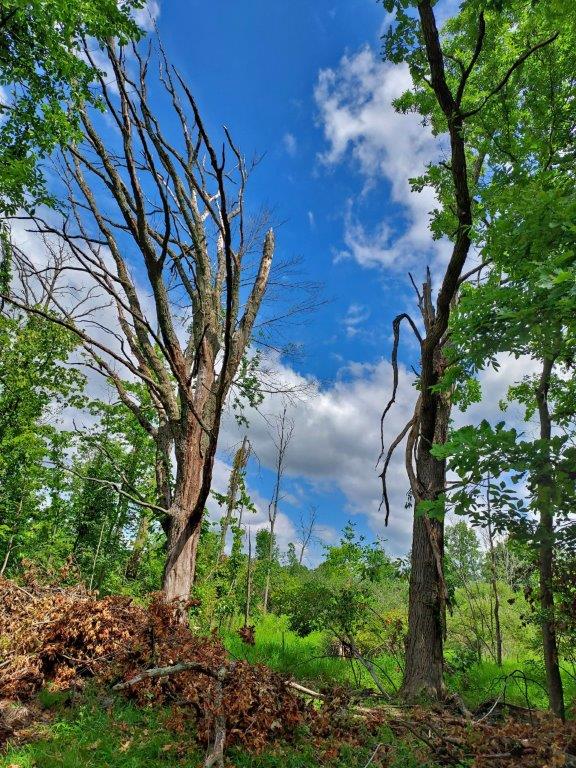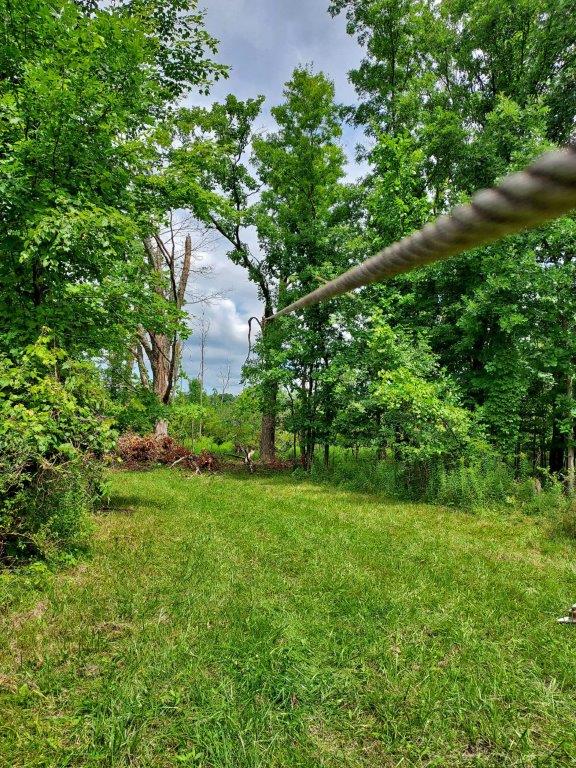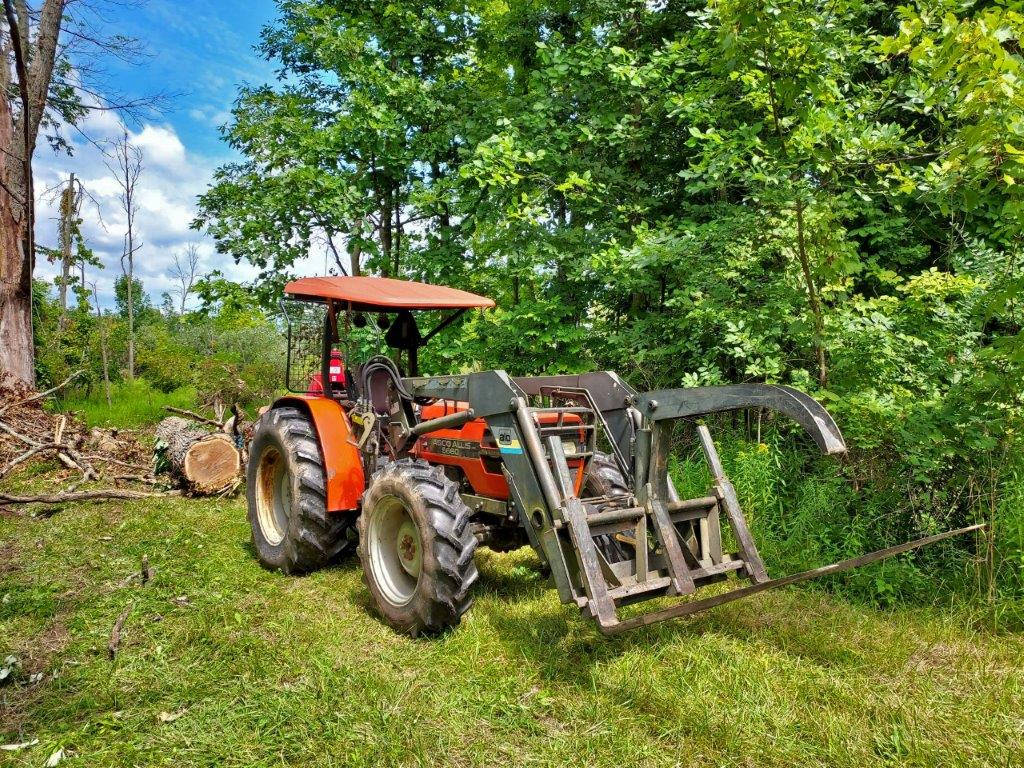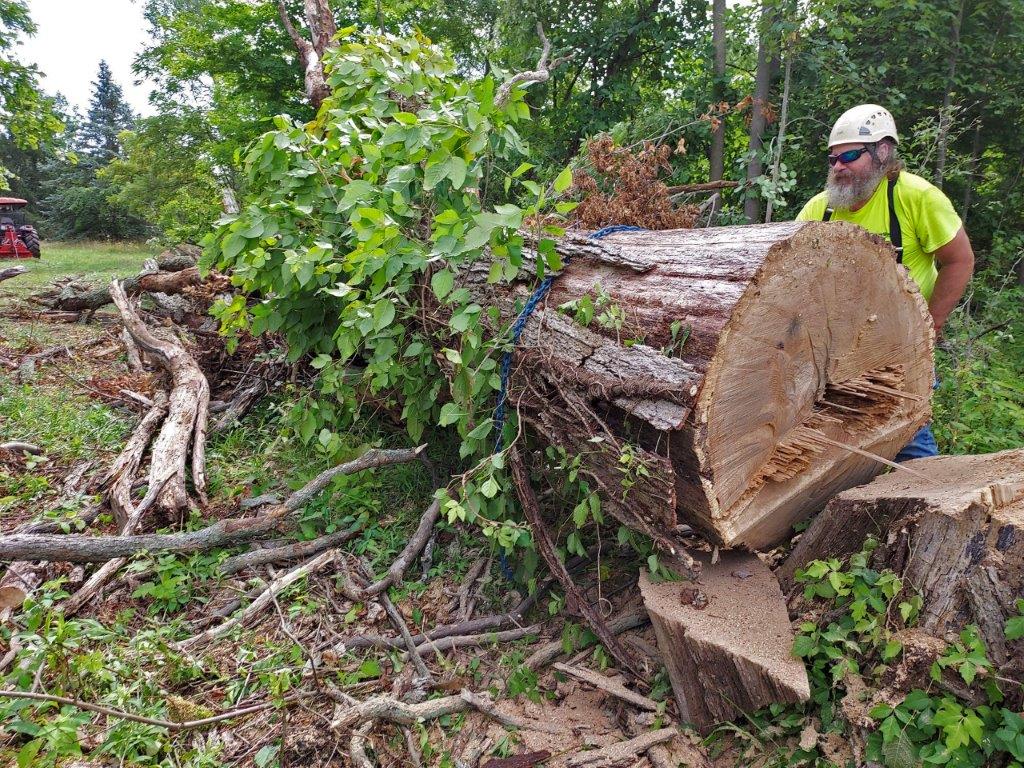Gotta wonder if anyone would be willing to saw those logs... Urban wood often has embedded stuff!logging can be big down here in Big City. this yesterday as we drove to grocery... only a few blocks from us. headed up to Sawdust Man's... is my guess! ~
View attachment 1103202
You are using an out of date browser. It may not display this or other websites correctly.
You should upgrade or use an alternative browser.
You should upgrade or use an alternative browser.
Scrounging Firewood (and other stuff)
- Thread starter mainewoods
- Start date

Help Support Arborist Forum:
This site may earn a commission from merchant affiliate
links, including eBay, Amazon, and others.
Years ago, when the wife and I both volunteered at the dog shelter and the rules were far laxer, we took one of the more unruly pits for a hike up South Mt Beacon. It was one of the few times in his life he was away from the shelter (other than walks near the shelter). He was a very athletic dog, and really enjoyed the hike.
He was very good with my wife and me because he knew us well, but he tagged several other folks, and he would not give you warning until he went for you.
About halfway up on the hike, the dog got hit by a swarm of yellowjackets and it was very stressful trying to get the bees off of the dog w/o getting bit or stung, but we managed.
Luckly, Dusty (a tall slim brindle pit) did not seem to have any adverse effects and enjoyed the rest of the hike. He has since passed but lived a long life at the shelter.
I'm thinking that may have been his best day. A car ride and a nice hike. He was very well behaved with us, you just could not let anyone else go near him, as he would not give them warning. Soon after, the rules changed, and you were not allowed to sign dogs like him out of the shelter.
We did continue to walk him (near the shelter) for years, as he did not allow many other folks to do it.
He was very good with my wife and me because he knew us well, but he tagged several other folks, and he would not give you warning until he went for you.
About halfway up on the hike, the dog got hit by a swarm of yellowjackets and it was very stressful trying to get the bees off of the dog w/o getting bit or stung, but we managed.
Luckly, Dusty (a tall slim brindle pit) did not seem to have any adverse effects and enjoyed the rest of the hike. He has since passed but lived a long life at the shelter.
I'm thinking that may have been his best day. A car ride and a nice hike. He was very well behaved with us, you just could not let anyone else go near him, as he would not give them warning. Soon after, the rules changed, and you were not allowed to sign dogs like him out of the shelter.
We did continue to walk him (near the shelter) for years, as he did not allow many other folks to do it.
Sawyer Rob
Addicted to ArboristSite
Well, it was time to cut down these two trees,

My buddy and me, used the skidding winch on my tractor to winch out the hangers and then put the winch line high up in the tree to winch it over,

With that done, my buddy cut the notch,

and he did the back cut, then I winched the tree over. With the tree on the ground, we limbed and cut it into sections and winched the logs out of the way,

This tree was over 30" on the stump,

With THAT done, we put the winch line up in the second tree,

Then it was "rince and repeat", and this tree is even bigger, at over 40". Here's my buddy standing next to it,

That was enough for one afternoon, I'll get back on that project later!
SR

My buddy and me, used the skidding winch on my tractor to winch out the hangers and then put the winch line high up in the tree to winch it over,

With that done, my buddy cut the notch,

and he did the back cut, then I winched the tree over. With the tree on the ground, we limbed and cut it into sections and winched the logs out of the way,

This tree was over 30" on the stump,

With THAT done, we put the winch line up in the second tree,

Then it was "rince and repeat", and this tree is even bigger, at over 40". Here's my buddy standing next to it,

That was enough for one afternoon, I'll get back on that project later!
SR
Thank goodness. We'd all been sick if it got dented up!Forgot to post this . First time truck had seen water since I finished it . The next day it hailed in the evening but I had it under the motel overhang . View attachment 1103295

$202.29
Oregon Yukon Chainsaw Safety Protective Bib & Braces Trousers - Type A Protection, Dark Grey, Large
Express Shipping ⭐⭐⭐⭐⭐

$215.05
$233.19
Weaver Leather WLC 315 Saddle with 1" Heavy Duty Coated Webbing Leg Straps, Medium, Brown/Red
Amazon.com

$337.83
$369.99
WEN Electric Log Splitter, 6.5-Ton Capacity with Portable Stand (56208)
Amazon.com

$79.99
ZELARMAN Chainsaw Chaps 8-layer Protective Apron Wrap Adjustable Chainsaw Pants/Chap for Loggers Forest Workers Class A
QUALITY GARDEN & HAND TOOLS

$39.99
$59.99
SPEED FORCE Kindling Splitter-Log Splitter-FireWood Splitter–Power Log Splitter Blade Made from CAST Steel, Black Large
SpeedForceUSA

$56.99 ($0.38 / Foot)
$59.99 ($0.40 / Foot)
Double Braid Arborist Rope Orange(1/2 in x 150 ft) Arborist Rigging Polyester Rope - 48 Strand Rope Swing for Tree Bull Rope for Outdoor, Climbing, Swing, Sailing
Cosirulnta Shop

$56.99 ($0.38 / Foot)
$69.79 ($0.47 / Foot)
Arborist Rigging Rope 1/2 in x 150 Ft Blue Bull Rope Polyester Braided Arborist Rope 1/2 inch 48 Strands 150 Feet for Various Outdoor Applications Construction Climbing Swing Sailing
Glfcai store

$63.99
ZELARMAN Chainsaw Chaps Apron Wrap 8-layer for Men/Women Loggers Forest Workers Protective Chain Saw Pants Adjustable
QUALITY GARDEN & HAND TOOLS

$38.99 ($0.39 / Foot)
Arborist Rope Climbing Rope Swing for Tree(1/2in x 100ft) Logging Rope 48 Strands for Pull, Swing, Knot (Orange)
SDFJKLDI

$14.99
$17.99
Fiskars Pole Saw Blade Replacement for Fiskars Pruning Saws and Tree Pruners, 15" Blade with Woodzig Chainsaw-Style Tooth Design
AMZ South Supply

$59.99 ($0.40 / Foot)
$69.99 ($0.47 / Foot)
Arborist Rigging Rope Bull Rope Black (1/2 in x 150ft) Polyester Braided Arborist Rope 48 Strands for Tree Work Camping or Swinging…
UIERTIO
Have you never been stung by a wasp?I was told wasps eat spiders, and not a danger to upright bi-peds.. can even find half dead spiders in a nest meant to fed hatched young. Was it a crock of bs? The blue ones are said to be the serious insect killers.
Hurts plenty. Worse than a honeybee in my experience.
Got nailed by 5 White faced hornetsHave you never been stung by a wasp?
Hurts plenty. Worse than a honeybee in my experience.
I rank the white faced bastards as the worst for bee stings.Got nailed by 5 White faced hornetsonce, that was an experience don’t want to repeat,
Several of the newer cars in the parking were all dented up. My truck was getting hit but it was mostly protected. And the metal is twice as thickThank goodness. We'd all been sick if it got dented up!
Sawyer Rob
Addicted to ArboristSite
My dad called them bald faced hornets, and he always said they were by far the worst for stings!I rank the white faced bastards as the worst for bee stings.
SR
We primarily have the big black ones a.k.a. white face wasps and then the smaller yellow jackets. In a normal year, the yellow jackets are much more prevalent. To my understanding, there’s one type of tree nesting yellow jacket and another type of ground nesting. I’ve had the most problems with the ground nesting yellow jackets. Occasionally you’ll come across a smaller type of black and white ones that build tree nests as well. That’s about all we have around here for stinging insects except maybe an odd mud dauber here and there.
Twice I’ve encountered the big white face wasps in very low nests. One was in tall grass, at the edge of a farm field, and the other one was in low brush next to my friends lawn.
Twice I’ve encountered the big white face wasps in very low nests. One was in tall grass, at the edge of a farm field, and the other one was in low brush next to my friends lawn.
Not sure about accuracy, but I've heard some species will build underground or on limbs etc. depending on the harshness of the coming winter.We primarily have the big black ones a.k.a. white face wasps and then the smaller yellow jackets. In a normal year, the yellow jackets are much more prevalent. To my understanding, there’s one type of tree nesting yellow jacket and another type of ground nesting. I’ve had the most problems with the ground nesting yellow jackets. Occasionally you’ll come across a smaller type of black and white ones that build tree nests as well. That’s about all we have around here for stinging insects except maybe an odd mud dauber here and there.
Twice I’ve encountered the big white face wasps in very low nests. One was in tall grass, at the edge of a farm field, and the other one was in low brush next to my friends lawn.
One thing I've learned on yellow jackets in the ground is I've been able to go out early while it was still cool and mow right over the nest. The secret is to just keep going and not to come back for a second pass beside the first one til the next morning. At that point you are far enough away they don't pay any attention anymore. I've been doing this for some time now with zero stings. I have also learned to always be looking ahead as I mow. Many times I've seen a swarm where I had went over a nest on my last pass and got them stirred up. I just give them their space and come back later for another pass.
In either case, hi temps and bright sunshine greatly increases your chances of having a very bad day!
they don't look like headed to the dump!Gotta wonder if anyone would be willing to saw those logs... Urban wood often has embedded stuff!
Agreed, if you clear the area before they get whipped into a tizzy you are in the clear. I have been nailed when you get into an area where you need to turn the mower around and then they get you.Not sure about accuracy, but I've heard some species will build underground or on limbs etc. depending on the harshness of the coming winter.
One thing I've learned on yellow jackets in the ground is I've been able to go out early while it was still cool and mow right over the nest. The secret is to just keep going and not to come back for a second pass beside the first one til the next morning. At that point you are far enough away they don't pay any attention anymore. I've been doing this for some time now with zero stings. I have also learned to always be looking ahead as I mow. Many times I've seen a swarm where I had went over a nest on my last pass and got them stirred up. I just give them their space and come back later for another pass.
In either case, hi temps and bright sunshine greatly increases your chances of having a very bad day!
glad u escaped the hail!Forgot to post this . First time truck had seen water since I finished it . The next day it hailed in the evening but I had it under the motel overhang . View attachment 1103295
The first time I was swarm stung by yellow jackets I was manning a horse drawn sickle bar mower cutting down an overgrown and weedy field. Seems the mower's bar found the nest and the yellow jackets used it to find me. BTW, the mower was being pulled by a tractor, not a horse.Not sure about accuracy, but I've heard some species will build underground or on limbs etc. depending on the harshness of the coming winter.
One thing I've learned on yellow jackets in the ground is I've been able to go out early while it was still cool and mow right over the nest. The secret is to just keep going and not to come back for a second pass beside the first one til the next morning. At that point you are far enough away they don't pay any attention anymore. I've been doing this for some time now with zero stings. I have also learned to always be looking ahead as I mow. Many times I've seen a swarm where I had went over a nest on my last pass and got them stirred up. I just give them their space and come back later for another pass.
In either case, hi temps and bright sunshine greatly increases your chances of having a very bad day!

Had a couple of nests in rotten stumps, in the ground, and some railroad ties, used for landscaping.
Daughter and dog got stung.
Went back at night with pickaxe and several cans of wasp killer.
Stump is long gone. But railroad ties are still uninhabited 25 years later.
Philbert
Daughter and dog got stung.
Went back at night with pickaxe and several cans of wasp killer.
Stump is long gone. But railroad ties are still uninhabited 25 years later.
Philbert
Sawyer Rob
Addicted to ArboristSite
I still have the one I rode many a mile on as a kid mowing hay!! I also have the Farmall BN that we pulled it with.The first time I was swarm stung by yellow jackets I was manning a horse drawn sickle bar mower cutting down an overgrown and weedy field. Seems the mower's bar found the nest and the yellow jackets used it to find me. BTW, the mower was being pulled by a tractor, not a horse.I was in my mid-teens.... people would have a stroke if they saw a kid doing that today, especially given that another kid was driving the tractor! For those not familiar with those mowers here's a image of one... complete with nothing resembling safety equipment. Cool stuff!
View attachment 1103495
SR
Similar threads
- Replies
- 17
- Views
- 2K
- Replies
- 37
- Views
- 2K
- Replies
- 8
- Views
- 577












































